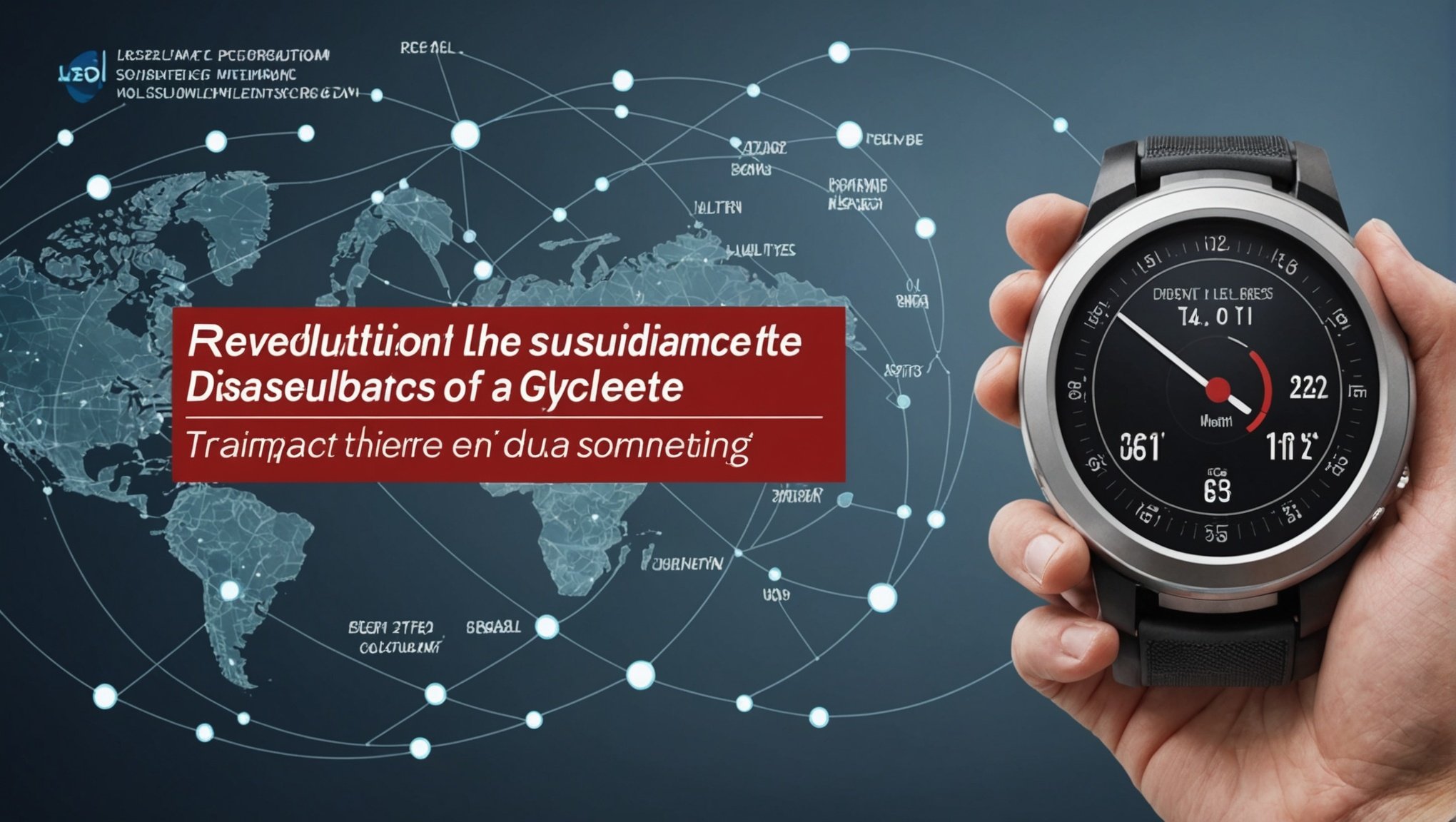Managing diabetes has evolved dramatically with the advent of Continuous Glucose Monitoring (CGM). This innovative technology offers real-time insights into blood sugar levels, enabling patients to make informed decisions about their health. CGMs not only enhance day-to-day management but also empower individuals to better understand their body's responses. Discover how this shift in diabetes care promises improved health outcomes and greater independence for those living with the condition. Explore the transformative potential of CGMs and the future of diabetes management.
Understanding Continuous Glucose Monitoring
Continuous glucose monitoring (CGM) is a revolutionary advancement in diabetes management, offering real-time insights into blood glucose levels. Unlike traditional methods that require finger-prick blood tests, CGM provides a more dynamic picture of glucose fluctuations throughout the day and night.
In parallel : Exploring the Power of Progressive Muscle Relaxation: A Game-Changer for Labor Pain Relief
How It Works
CGM systems involve a small sensor inserted under the skin, typically on the abdomen or arm. This sensor measures glucose levels in the interstitial fluid every few minutes. The data is then transmitted to a display device, such as a smartphone or a dedicated receiver, allowing users to track trends and patterns. This technology in healthcare empowers individuals with diabetes to make informed decisions about diet, exercise, and medication.
Devices Used
Several devices are available, each with unique features. Popular brands include Dexcom, Freestyle Libre, and Medtronic. These devices vary in terms of sensor longevity, data sharing capabilities, and alerts for high or low glucose levels. Some models even integrate with insulin pumps for automated insulin delivery.
In parallel : Exploring the Impact of Community Arts Engagement on Youth Mental Wellness: A Deep Dive into Adolescent Well-Being
Comparison with Traditional Methods
Traditional glucose monitoring relies on periodic finger-prick tests, providing only a snapshot of glucose levels. In contrast, CGM offers continuous data, leading to better diabetes management by reducing the risk of complications associated with fluctuating glucose levels. This technologically savvy approach is more convenient and less intrusive, fostering improved health outcomes.
Benefits of Continuous Glucose Monitoring
Continuous Glucose Monitoring (CGM) provides numerous benefits that significantly enhance diabetes management. By offering enhanced glucose tracking and superior data accuracy, CGM allows for real-time monitoring of blood glucose levels, which is crucial for effective diabetes management. This continuous data stream helps patients and healthcare providers to better understand glucose trends, leading to more informed decisions about lifestyle and treatment adjustments.
Impact on Patient Lifestyle
CGM positively impacts patient lifestyle by reducing the need for frequent finger-prick tests, making diabetes management less intrusive and more convenient. This ease of use encourages patients to engage more actively in their health management, improving overall patient outcomes. Furthermore, the ability to receive alerts for high or low glucose levels empowers users to take timely action, preventing potential complications.
Reduction in Hypoglycemic Events
One of the most significant advantages of CGM is its role in reducing hypoglycemic events. By providing continuous data, CGM helps in identifying patterns and triggers of low blood sugar, allowing for proactive management. This reduction in hypoglycemic events not only improves diabetes management but also enhances the quality of life for individuals living with diabetes, minimizing the risk of long-term complications.
Recent Advancements in Continuous Glucose Monitoring
In recent years, CGM advancements have transformed diabetes care, integrating cutting-edge technology innovations. One significant development is the seamless integration of CGM devices with smartphones, allowing users to monitor glucose levels through user-friendly apps. This connectivity enhances the accessibility and convenience of glucose data, empowering users to manage their health more effectively.
Emerging Technologies
Emerging technologies are paving the way for the future of diabetes care. Innovations such as artificial intelligence and machine learning are being explored to predict glucose trends and offer personalised health insights. These advancements aim to provide more accurate and tailored recommendations, improving overall diabetes management.
Trends in Wearable Health Technology
The development of wearable health technology is another key trend shaping CGM devices. Manufacturers are focusing on creating smaller, more discreet sensors that can be worn comfortably for extended periods. This trend not only enhances user experience but also encourages continuous use, leading to better health outcomes.
- Smartphone integration for real-time monitoring
- Use of artificial intelligence for personalised insights
- Focus on wearable technology for improved user experience
These advancements highlight the potential of CGM to revolutionise diabetes care, offering a glimpse into the future of technology innovations in health management.
Case Studies and Real-Life Testimonials
The transformative potential of Continuous Glucose Monitoring (CGM) is best illustrated through CGM case studies and patient experiences. These real-life accounts highlight the profound impact CGM has on diabetes management.
Successful Implementations
Numerous diabetes success stories showcase the effectiveness of CGM in improving patient outcomes. For instance, studies reveal that individuals using CGM experience a significant reduction in HbA1c levels, demonstrating enhanced blood glucose control. This improvement is attributed to the continuous data stream, which allows for timely interventions and adjustments in lifestyle or medication.
Quality of Life Changes
Testimonials from users often underline the positive changes in their quality of life. Many report feeling more in control of their condition, with fewer disruptions to daily activities. The convenience of not having to perform frequent finger-prick tests is frequently cited as a major advantage, leading to increased adherence and engagement with their health management.
Impact on Healthcare Costs
The adoption of CGM also influences healthcare costs and resource utilization. By reducing the incidence of complications and hospital visits, CGM can lead to cost savings for both patients and healthcare systems. This underscores the value of investing in advanced diabetes management solutions.
Implications for Healthcare Providers and Patients
Continuous Glucose Monitoring (CGM) is reshaping diabetes care, necessitating a shift in approach for healthcare providers. Their role extends beyond recommending devices to becoming integral in CGM integration in care plans. Providers must assess individual needs, considering factors like lifestyle and health status, to suggest the most suitable CGM system. This personalised approach ensures patients benefit fully from the technology.
Healthcare provider insights reveal that effective CGM implementation hinges on comprehensive patient education. Patients require guidance on using devices, interpreting data, and adjusting treatment plans accordingly. This education empowers patients, fostering independence and confidence in managing their condition.
Patient education is crucial for maximising CGM's potential. Providers should offer continuous support, addressing concerns and ensuring patients understand the implications of glucose trends. This support is vital for preventing complications and enhancing quality of life.
Looking ahead, CGM's role in diabetes care management systems is expected to expand. As technology evolves, it will further integrate into holistic care plans, offering more precise data and personalised health insights. This future outlook underscores the importance of adapting healthcare practices to fully leverage CGM's benefits.











